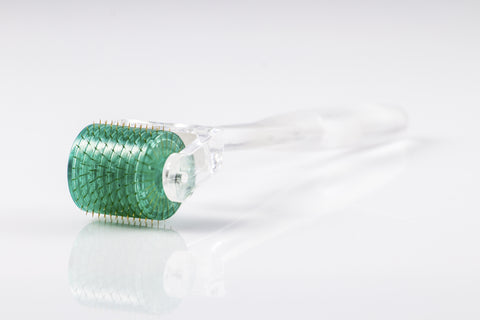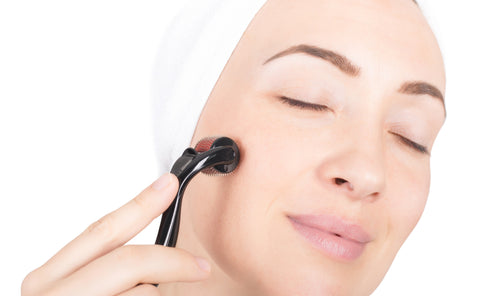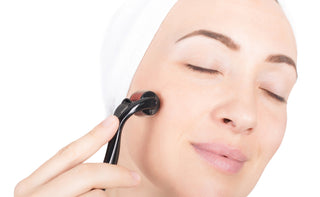What are your thoughts on needles? When it comes to sticking needles near the face, people seem to be split into two very distinct camps: there are the serious needle-phobes who staunchly resist, and then there are the YOLO types who are down to experiment. Needless to say, when we first started looking into derma rolling (AKA microneedling) we knew it’d be the perfect topic to kick off our reoccurring feature, aptly dubbed ‘Beauty Dare’. Each month we’ll be taking on a new Beauty Dare—a lesser-known or slightly controversial beauty treatment—and picking it apart, weighing the pros and cons, and ultimately helping you decide if it’s up your alley or absolutely not. So without further ado, let’s dive into derma rolling.

First things first: we swear that derma rolling/microneedling isn’t as scary as it sounds. Yes, there are definitely needles involved, but not in the way you think. A derma roller is a skin tool that looks a lot like a paint roller, only smaller. The head is covered in hundreds of teensy tiny titanium needles that are meant to be rolled lightly across the skin to penetrate the outermost layer of of your epidermis, the stratum corneum. What results are “micro injuries”—essentially, you’re poking small holes in that top layer of skin and in doing so, instigating collagen production.
Without taking you back to your high school bio class, it’s important to know that collagen is the most abundant protein in the human body. It’s found in your bones, muscles, and yep you guessed it, even your skin. So it makes sense that the rush of collagen that results from derma rolling means good news for your skin, from preventing wrinkles, to treating hyperpigmentation and even fading scars caused by acne (http://www.ncbi.nlm.nih.gov/pmc/articles/PMC2840919/).

At this point you’re probably feeling pretty down for derma rolling, right? Well slow your roll (pun 100% intended), homie. Derma rolling definitely isn’t for everyone. If you’re dealing with a breakout, it’s best to consult your dermatologist before starting a microneedling routine. And even if your skin isn’t acne-prone, there are a few things to know before getting started:
-Derma rollers are surprisingly inexpensive. However, we suggest doing your research rather than springing for the cheapest one you find.
-Choose a derma roller with needles between 0.2mm and 1.5mm. Anything over 1.5mm should only be handled by a professional.
-Never never NEVER share your derma roller, seriously. It isn’t worth the risk of infection or cross contamination.
-Always sanitize your derma roller both before AND after use, with at least 75% alcohol.
-Make sure your face is bare and skin is clean before rolling.
-Replace your derma roller regularly, which is about every 6-8 months, depending on how often you use it.
PHEW—we know that was a lot. All that being said, derma rolling doesn’t need to be scary. Use only the amount of pressure that you feel comfortable with—if blood results, you’re doing it wrong. Roll in all directions (up and down, side to side, and diagonally), in the shape of an asterisk. And once you’re done, make sure to only apply products that you know your skin to be agreeable with. Though the holes you’ve made will close in about an hour, your skin will still be more sensitive than usual. Something lightweight and free of silicones, sulfates, parabens and irritants, like our Coconut Sheer Oil, should do the trick. While everyone’s skin is different, most people will see and feel minor results immediately, like brighter skin due to the exfoliating properties of rolling. To reap bigger benefits like scar reduction though, you’ll have to roll regularly (about every other week) for at least a month, if not a bit longer.
So what do you think? Would you dare to derma roll? Tell us why (or why not) in the comments below.


